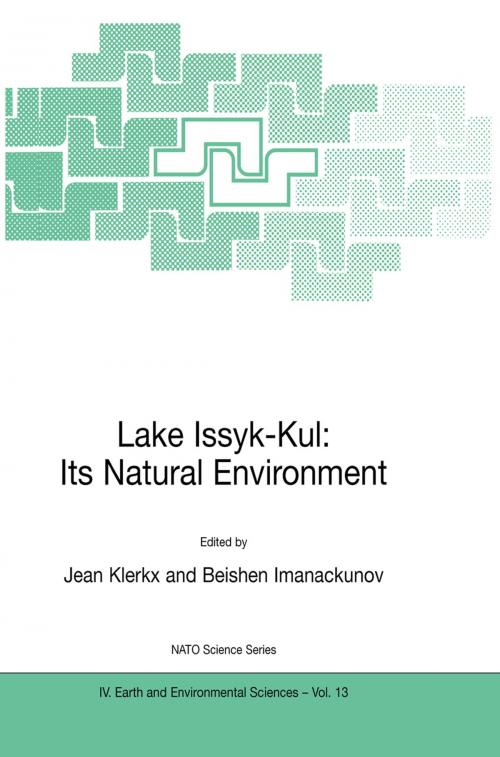Lake Issyk-Kul: Its Natural Environment
Nonfiction, Science & Nature, Science, Earth Sciences, Oceanography, Biological Sciences, Ecology| Author: | ISBN: | 9789401004916 | |
| Publisher: | Springer Netherlands | Publication: | December 6, 2012 |
| Imprint: | Springer | Language: | English |
| Author: | |
| ISBN: | 9789401004916 |
| Publisher: | Springer Netherlands |
| Publication: | December 6, 2012 |
| Imprint: | Springer |
| Language: | English |
Lake Issyk-Kul is a closed lake located in the Tien Shan mountain belt of the Republic of Kyrgyzstan. It is the world's fifth deepest lake (668 m) and the second largest high altitude lake in the world (1607 m above sea level). The lake is affected by several environmental threats of both anthropogenic and natural origin: decline of the lake level resulting in progressively increasing salinity, incomplete vertical water exchange, and risk of contamination by past and present industrial activity.
Although the lake has been intensively studied, the information is only available in unpublished reports or local scientific journals. This book presents for the first time to an international audience the main physical, chemical, biological and geological characteristics of the lake, the fruits of many years of observations, complemented by recent results of international projects. Case studies of similar problems in other parts of the world are presented, together with ethical aspects of the environmental protection of the lake.
Lake Issyk-Kul is a closed lake located in the Tien Shan mountain belt of the Republic of Kyrgyzstan. It is the world's fifth deepest lake (668 m) and the second largest high altitude lake in the world (1607 m above sea level). The lake is affected by several environmental threats of both anthropogenic and natural origin: decline of the lake level resulting in progressively increasing salinity, incomplete vertical water exchange, and risk of contamination by past and present industrial activity.
Although the lake has been intensively studied, the information is only available in unpublished reports or local scientific journals. This book presents for the first time to an international audience the main physical, chemical, biological and geological characteristics of the lake, the fruits of many years of observations, complemented by recent results of international projects. Case studies of similar problems in other parts of the world are presented, together with ethical aspects of the environmental protection of the lake.















